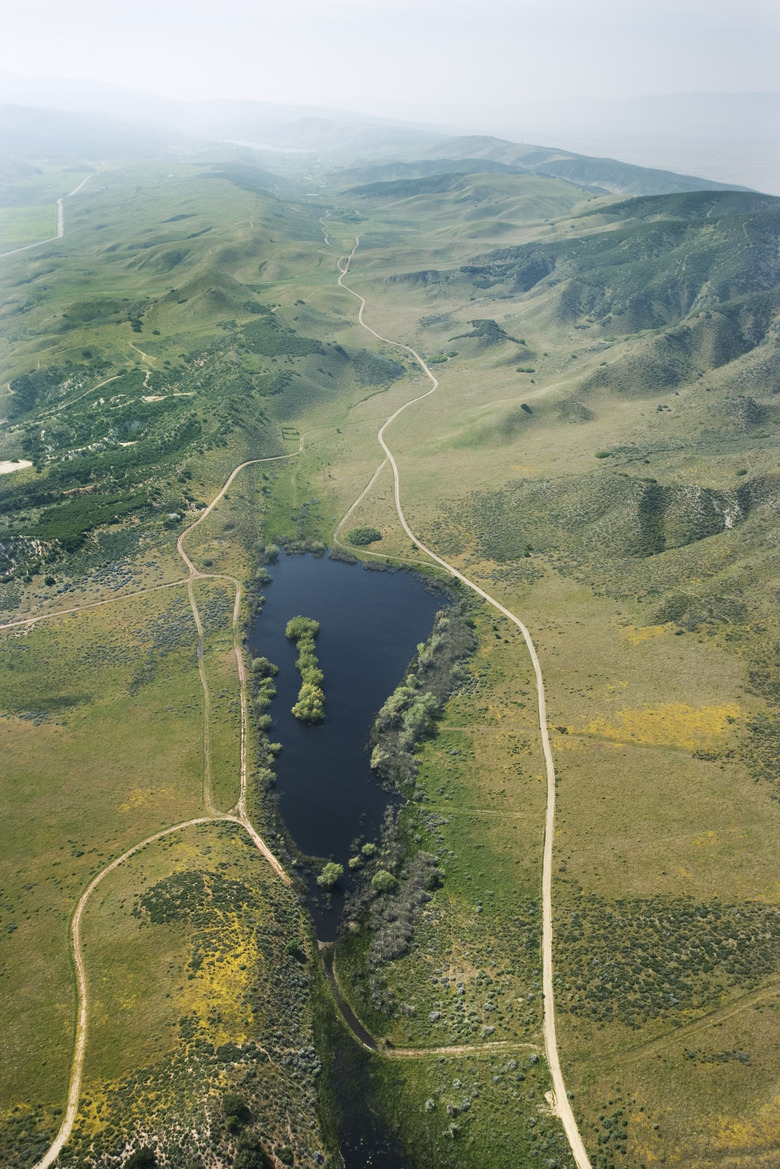How Does Plate Tectonics Affect The Rock Cycle?
Plate Tectonics
Plate Tectonics
Plate tectonics is the movement of the Earth's crust through convection currents that occur in the mantle. Divergent plate boundaries occur where hot magma rises to the surface, pushing the plates apart. The mid-ocean ridges form at divergent plate boundaries. Convergent plate boundaries occur where cooled rock becomes denser than the rocks around it and sinks back into the mantle. Oceanic trenches, folded mountains and volcanic mountains occur at convergent plate boundaries. Sliding plate boundaries occur when one plate slides past another plate through a twisting force. The San Andreas Fault is an example of a sliding plate boundary.
Igneous Rocks and Plate Tectonics
Igneous Rocks and Plate Tectonics
Igneous rocks form from the cooling of magma or lava. At diverging plate boundaries, convection currents bring hot magma to the surface. This hot magma flows out onto the ocean floor, forming extrusive, finely grained igneous rocks. At convergent plate boundaries, sedimentary rock from the ocean floor gets pushed down into the mantle. The crust increases in temperature as it dives deeper into the mantle. Eventually, the crust melts and rises to the surface causing a volcanic eruption, creating igneous rocks. Sometimes, magma that gets pushed up at plate boundaries cools before it gets there. It fills in cracks and voids in the bedrock. When it cools, it creates igneous rock formations, such as dikes and batholiths.
Metamorphic Rocks and Plate Tectonics
Metamorphic Rocks and Plate Tectonics
Metamorphic rocks form when rocks change after undergoing extreme pressure or temperature increase. These temperature changes must be hot enough to reorganize matter within the rock but not hot enough to melt it. Hot magma pushes itself to the surface at both divergent plate boundaries and convergent plate boundaries. This magma comes in contact with rocks as it rises to the surface. The magma is hot, heating the rocks around it. As the rocks heat, they change and become metamorphic rocks. This process is called contact metamorphism. Regional metamorphism occurs at convergent plate boundaries, due to intense pressure. As two plates collide, the Earth's crust folds and faults. The intense pressure changes large areas of the Earth's crust into metamorphic rock. Mountain ranges are typically metamorphic rock, due to plate tectonic processes.
Cite This Article
MLA
Fiore, Corina. "How Does Plate Tectonics Affect The Rock Cycle?" sciencing.com, https://www.sciencing.com/plate-tectonics-affect-rock-cycle-5410576/. 24 April 2017.
APA
Fiore, Corina. (2017, April 24). How Does Plate Tectonics Affect The Rock Cycle?. sciencing.com. Retrieved from https://www.sciencing.com/plate-tectonics-affect-rock-cycle-5410576/
Chicago
Fiore, Corina. How Does Plate Tectonics Affect The Rock Cycle? last modified August 30, 2022. https://www.sciencing.com/plate-tectonics-affect-rock-cycle-5410576/
